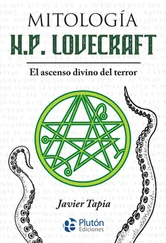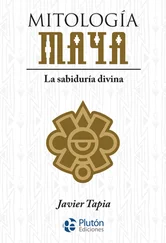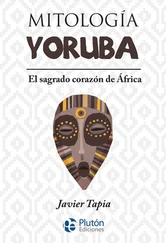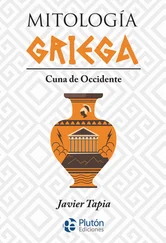He published this theory in 1967, in an article in the The New England Journal of Medicine entitled “Early Establishment of Gender Identity: The Terminal Twos.” After that, his reputation reached the stratosphere. The funding flowed in, from the Rockefeller Foundation, the Ford Foundation, and the N.I.S. It was a great time to be a sexologist. The Sexual Revolution provided new opportunities for the enterprising sex researcher. It was a matter of national interest, for a few years there, to examine the mechanics of the female orgasm. Or to plumb the psychological reasons why certain men exhibited themselves on the street. In 1968, Dr. Luce opened the Sexual Disorders and Gender Identity Clinic. Luce treated everybody: the webbed-necked girl teens with Turner’s syndrome, who had only one sex chromosome, a lonely X; the leggy beauties with Androgen Insensitivity; or the XYY boys, who tended to be dreamers and loners. When babies with ambiguous genitalia were born at the hospital, Dr. Luce was called in to discuss the matter with the bewildered parents. Luce got the transsexuals, too. Everyone came to the Clinic, with the result that Luce had at his disposal a body of research material—of living, breathing specimens—no scientist had ever had before.
And now Luce had me. In the examination room, he told me to get undressed and put on a paper gown. After taking some blood (only one vial, thankfully), he had me lie down on a table with my legs up in stirrups. There was a pale green curtain, the same color as my gown, that could be pulled across the table, dividing my upper and lower halves. Luce didn’t close it that first day. Only later, when there was an audience.
“This shouldn’t hurt but it might feel a little funny.”
I stared up at the ring light on the ceiling. Luce had another light on a stand, which he angled to suit his purposes. I could feel its heat between my legs as he pressed and prodded me.
For the first few minutes I concentrated on the circular light, but finally, drawing in my chin, I looked down to see that Luce was holding the crocus between his thumb and forefinger. He was stretching it out with one hand while measuring it with the other. Then he let go of the ruler and made notes. He didn’t look shocked or appalled. In fact he examined me with great curiosity, almost connoisseurship. There was an element of awe or appreciation in his face. He took notes as he proceeded but made no small talk. His concentration was intense.
After a while, still crouching between my legs, Luce turned his head to search for another instrument. Between the sight lines of my raised knees his ear appeared, an amazing organ all its own, whorled and flanged, translucent in the bright lights. His ear was very close to me. It seemed for a moment as though Luce were listening at my source. As though some riddle were being imparted to him from between my legs. But then he found what he had been looking for and turned back.
He began to probe inside.
“Relax,” he said.
He applied a lubricant, huddled in closer.
“Re lax .”
There was a hint of annoyance, of command in his voice. I took a deep breath and did the best I could. Luce poked inside. For a moment it felt merely strange, as he’d suggested. But then a sharp pain shot through me. I jerked back, crying out.
“Sorry.”
Nevertheless, he kept on. He placed one hand on my pelvis to steady me. He probed in farther, though he avoided the painful area. My eyes were welling with tears.
“Almost finished,” he said.
But he was only getting started.
The chief imperative in cases like mine was to show no doubt as to the gender of the child in question. You did not tell the parents of a newborn, “Your baby is a hermaphrodite.” Instead, you said, “Your daughter was born with a clitoris that is a little larger than a normal girl’s. We’ll need to do surgery to make it the right size.” Luce felt that parents weren’t able to cope with an ambiguous gender assignment. You had to tell them if they had a boy or a girl. Which meant that, before you said anything, you had to be sure what the prevailing gender was.
Luce could not do this with me yet. He had received the results of the endocrinological tests performed at Henry Ford Hospital, and so knew of my XY karyotype, my high plasma testosterone levels, and the absence in my blood of dihydrotestosterone. In other words, before even seeing me, Luce was able to make an educated guess that I was a male pseudohermaphrodite—genetically male but appearing otherwise, with 5-alpha-reductase deficiency syndrome. But that, according to Luce’s thinking, did not mean that I had a male gender identity.
My being a teenager complicated things. In addition to chromosomal and hormonal factors, Luce had to consider my sex of rearing, which had been female . He suspected that the tissue mass he had palpated inside me was testicular. Still, he couldn’t be sure until he had looked at a sample under a microscope.
All this must have been going through Luce’s mind as he brought me back to the waiting room. He told me he wanted to speak to my parents and that he would send them out when he was finished. His intensity had lessened and he was friendly again, smiling and patting me on the back.
In his office Luce sat down in his Eames chair, looked up at Milton and Tessie, and adjusted his glasses.
“Mr. Stephanides, Mrs. Stephanides, I’ll be frank. This is a complicated case. By complicated I don’t mean irremediable. We have a range of effective treatments for cases of this kind. But before I’m ready to begin treatment there are a number of questions I have to answer.”
My mother and father were sitting only a foot apart during this speech, but each heard something different. Milton heard the words that were there. He heard “treatment” and “effective.” Tessie, on the other hand, heard the words that weren’t there. The doctor hadn’t said my name, for instance. He hadn’t said “Calliope” or “Callie.” He hadn’t said “daughter,” either. He didn’t use any pronouns at all.
“I’ll need to run further tests,” Luce was continuing. “I’ll need to perform a complete psychological assessment. Once I have the necessary information, then we can discuss in detail the proper course of treatment.”
Milton was already nodding. “What kind of time line are we talking about, Doctor?”
Luce jutted out a thoughtful lower lip. “I want to redo the lab tests, just to be sure. Those results will be back tomorrow. The psychological evaluation will take longer. I’ll need to see your child every day for at least a week, maybe two. Also it would be helpful if you could give me any childhood photographs or family movies you might have.”
Milton turned to Tessie. “When does Callie start school?”
Tessie didn’t hear him. She was distracted by Luce’s phrase: “your child.”
“What kind of information are you trying to get, Doctor?” Tessie asked.
“The blood tests will tell us hormone levels. The psychological assessment is routine in cases like this.”
“You think it’s some kind of hormone thing?” Milton asked. “A hormone imbalance?”
“We’ll know after I’ve had time to do what I need to do,” said Luce.
Milton stood up and shook hands with the doctor. The consultation was over.
Keep in mind: neither Milton nor Tessie had seen me undressed for years. How were they to know? And not knowing, how could they imagine? The information available to them was all secondary stuff—my husky voice, my flat chest—but these things were far from persuasive. A hormonal thing. It could have been no more serious than that. So my father believed, or wanted to believe, and so he tried to convince Tessie.
Читать дальше
Конец ознакомительного отрывка
Купить книгу












